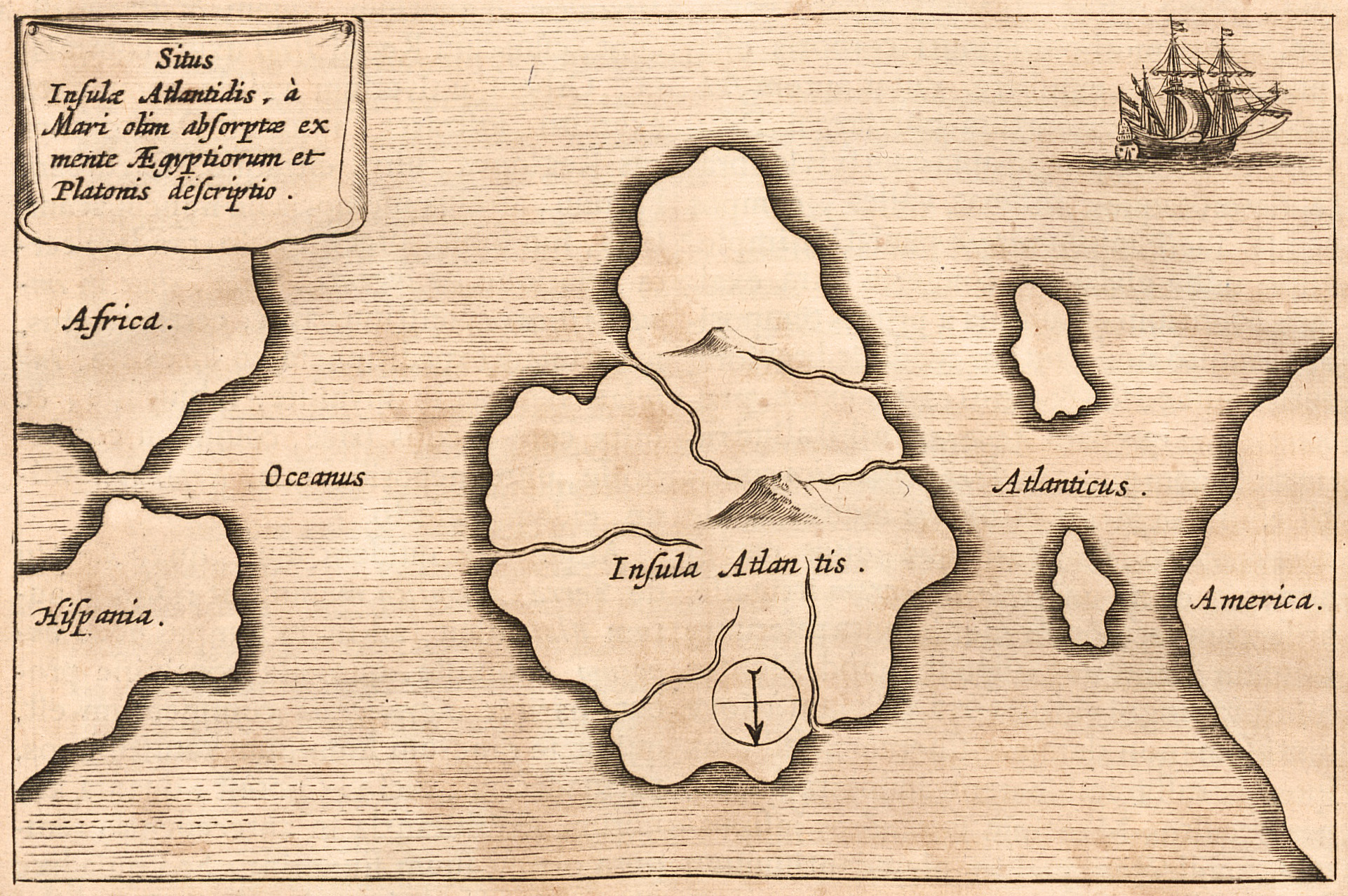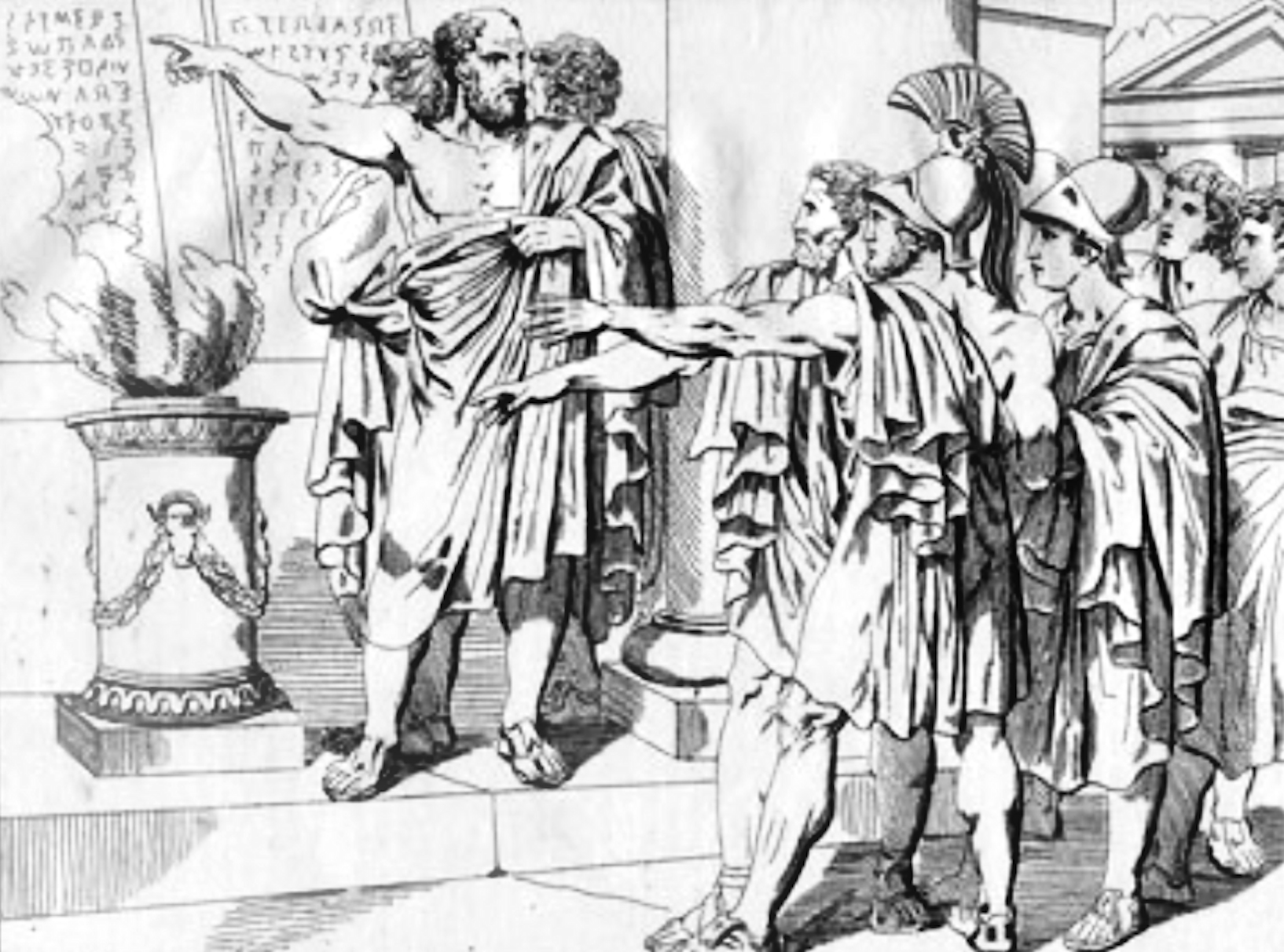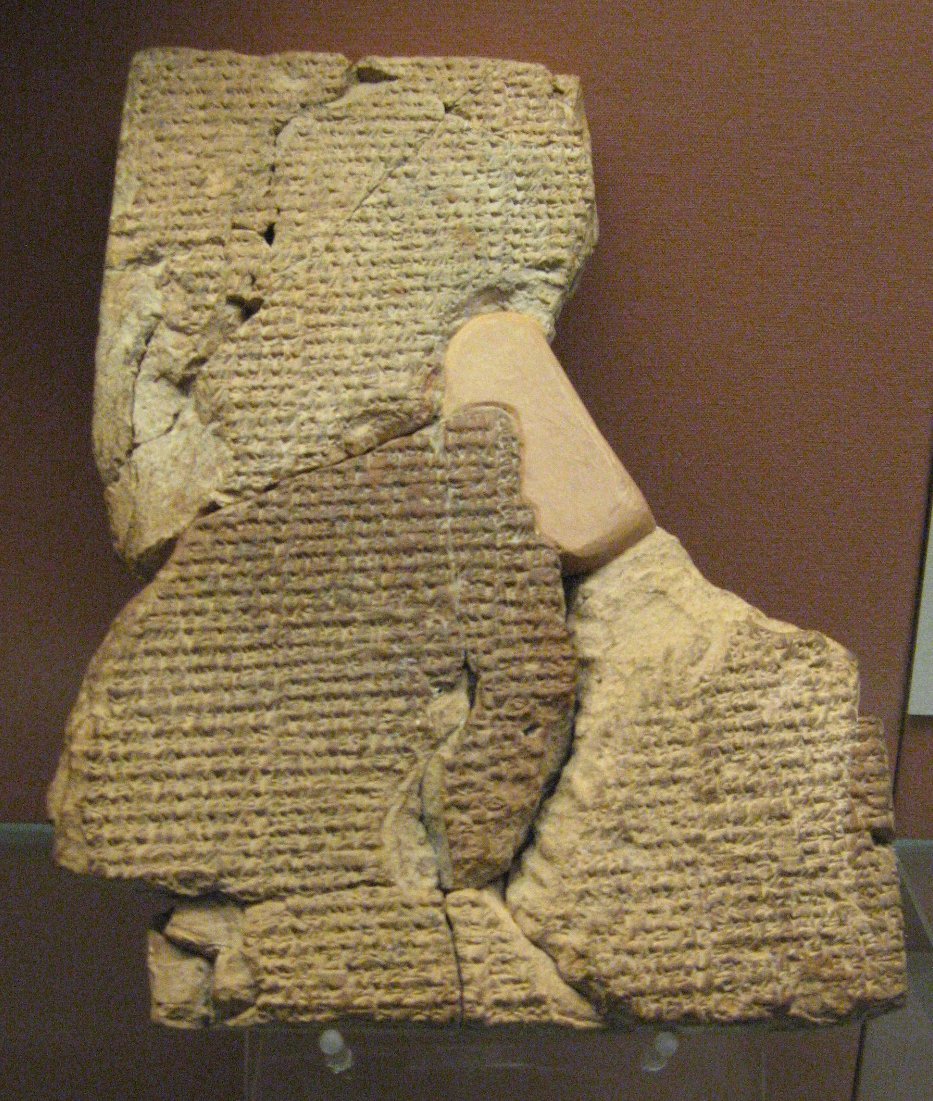|
Chalcidius
Calcidius (or Chalcidius) was a 4th-century philosopher (and possibly a Christian) who translated the first part (to 53c) of Plato's ''Timaeus'' from Greek into Latin around the year 321 and provided with it an extensive commentary. This was likely done for Bishop Hosius of Córdoba. Very little is otherwise known of him. His translation of the ''Timaeus'' was the only extensive text of Plato known to scholars in the Latin West for approximately 800 years.Edward Grant, (2004), ''Science and Religion, 400 B.C. to A.D. 1550'', pages 93–4. Greenwood Publishing Group His commentary also contained useful accounts of Greek astronomical knowledge. In the 12th century commentaries on this work were written by Christian scholars including Hisdosus and philosophers of the Chartres School, such as Thierry of Chartres and William of Conches. Interpreting it in the light of the Christian faith, the academics in the School of Chartres understood the dialogue to refer to ''creatio ex nihi ... [...More Info...] [...Related Items...] OR: [Wikipedia] [Google] [Baidu] |
Timaeus Trans Calcidius Med Manuscript
Timaeus (or Timaios) is a Greek name. It may refer to: * ''Timaeus'' (dialogue), a Socratic dialogue by Plato *Timaeus of Locri, 5th-century BC Pythagorean philosopher, appearing in Plato's dialogue *Timaeus (historian) (c. 345 BC-c. 250 BC), Greek historian from Tauromenium in Sicily *Timaeus the Sophist, Greek philosopher who lived sometime between the 1st and 4th centuries, supposed writer of a lexicon of Platonic words *Timaeus, mentioned in Mark 10:46 as the father of Bartimaeus *Timaeus (crater), a lunar crater named after the philosopher *Timaeus, one of the Three Legendary Dragons from the Japanese anime series ''Yu-Gi-Oh!'' *Timaios or Tutimaios, a pharaoh of Egypt mentioned by Josephus in his ''Contra Apionem'', sometimes identified with Dedumose II Djedneferre Dedumose II was a native ancient Egyptian pharaoh during the Second Intermediate Period. According to egyptologists Kim Ryholt and Darrell Baker, he was a ruler of the Theban 16th Dynasty.Ryholt, K. S. B. (1997 ... [...More Info...] [...Related Items...] OR: [Wikipedia] [Google] [Baidu] |
Terence
Publius Terentius Afer (; – ), better known in English as Terence (), was a Roman African playwright during the Roman Republic. His comedies were performed for the first time around 166–160 BC. Terentius Lucanus, a Roman senator, brought Terence to Rome as a slave, educated him and later on, impressed by his abilities, freed him. It is thought that Terence abruptly died, around the age of 25, likely in Greece or on his way back to Rome, due to shipwreck or disease. DEAD LINK He was supposedly on his way to explore and find inspiration for his comedies. His plays were heavily used to learn to speak and write in Latin during the Middle Ages and Renaissance Period, and in some instances were imitated by William Shakespeare. One famous quotation by Terence reads: "''Homo sum, humani nihil a me alienum puto''", or "I am human, and I think nothing human is alien to me." This appeared in his play '' Heauton Timorumenos''. Biography Terence's date of birth is disputed; Ae ... [...More Info...] [...Related Items...] OR: [Wikipedia] [Google] [Baidu] |
Platonic Solid
In geometry, a Platonic solid is a convex, regular polyhedron in three-dimensional Euclidean space. Being a regular polyhedron means that the faces are congruent (identical in shape and size) regular polygons (all angles congruent and all edges congruent), and the same number of faces meet at each vertex. There are only five such polyhedra: Geometers have studied the Platonic solids for thousands of years. They are named for the ancient Greek philosopher Plato who hypothesized in one of his dialogues, the ''Timaeus'', that the classical elements were made of these regular solids. History The Platonic solids have been known since antiquity. It has been suggested that certain carved stone balls created by the late Neolithic people of Scotland represent these shapes; however, these balls have rounded knobs rather than being polyhedral, the numbers of knobs frequently differed from the numbers of vertices of the Platonic solids, there is no ball whose knobs match the ... [...More Info...] [...Related Items...] OR: [Wikipedia] [Google] [Baidu] |
Atlantis
Atlantis ( grc, Ἀτλαντὶς νῆσος, , island of Atlas) is a fictional island mentioned in an allegory on the hubris of nations in Plato's works ''Timaeus'' and ''Critias'', wherein it represents the antagonist naval power that besieges "Ancient Athens", the pseudo-historic embodiment of Plato's ideal state in '' The Republic''. In the story, Athens repels the Atlantean attack unlike any other nation of the known world, supposedly bearing witness to the superiority of Plato's concept of a state. The story concludes with Atlantis falling out of favor with the deities and submerging into the Atlantic Ocean. Despite its minor importance in Plato's work, the Atlantis story has had a considerable impact on literature. The allegorical aspect of Atlantis was taken up in utopian works of several Renaissance writers, such as Francis Bacon's ''New Atlantis'' and Thomas More's ''Utopia''. On the other hand, nineteenth-century amateur scholars misinterpreted Plato's narrative ... [...More Info...] [...Related Items...] OR: [Wikipedia] [Google] [Baidu] |
Solon
Solon ( grc-gre, Σόλων; BC) was an Athenian statesman, constitutional lawmaker and poet. He is remembered particularly for his efforts to legislate against political, economic and moral decline in Archaic Athens.Aristotle ''Politics'' 1273b 35–1274a 21 His reforms failed in the short term, yet Solon is credited with having laid the foundations for Athenian democracy.Stanton, G. R. ''Athenian Politics c. 800–500 BC: A Sourcebook'', Routledge, London (1990), p. 76.E. Harris, ''A New Solution to the Riddle of the Seisachtheia'', in ''The Development of the Polis in Archaic Greece'', eds. L. Mitchell and P. Rhodes (Routledge 1997) 103 His constitutional reform also succeeded in overturning most laws established by Draco. Modern knowledge of Solon is limited by the fact that his works only survive in fragments and appear to feature interpolations by later authors and by the general paucity of documentary and archaeological evidence covering Athens in the early 6t ... [...More Info...] [...Related Items...] OR: [Wikipedia] [Google] [Baidu] |
Genesis Creation Narrative
The Genesis creation narrative is the creation myth of both Judaism and Christianity. The narrative is made up of two stories, roughly equivalent to the first two chapters of the Book of Genesis. In the first, Elohim (the Hebrew generic word for God) creates the heavens and the Earth in six days, then rests on, blesses, and sanctifies the seventh (i.e. the Biblical Sabbath). In the second story God (now referred to by the personal name Yahweh) creates Adam, the first man, from dust and places him in the Garden of Eden. There he is given dominion over the animals. Eve, the first woman, is created from Adam’s rib as his companion. The Hebrew creation narrative borrowed themes from Mesopotamian mythology, but adapted them to their unique monotheism, belief in one God. The first major comprehensive draft of the Pentateuch (the series of five books which begins with Genesis and ends with Deuteronomy) is thought to have been composed in the late 7th or the 6th century BCE (the Jahw ... [...More Info...] [...Related Items...] OR: [Wikipedia] [Google] [Baidu] |
Numenius Of Apamea
Numenius of Apamea ( grc-gre, Νουμήνιος ὁ ἐξ Ἀπαμείας, ''Noumēnios ho ex Apameias''; la, Numenius Apamensis) was a Greek philosopher, who lived in Apamea in Syria and Rome, and flourished during the latter half of the 2nd century AD. He was a Neopythagorean and forerunner of the Neoplatonists. Philosophy Statements and fragments of his apparently very numerous works have been preserved by Origen, Theodoret, and especially by Eusebius, and from them we may learn the nature of his Platonist-Pythagorean philosophy, and its approximation to the doctrines of Plato. Numenius was a Neopythagorean, but his object was to trace the doctrines of Plato up to Pythagoras, and at the same time to show that they were not at variance with the dogmas and mysteries of the Brahmins, Jews, Magi and Egyptians. His intention was to restore the philosophy of Plato, the genuine Pythagorean and mediator between Socrates and Pythagoras in its original purity, cleared from t ... [...More Info...] [...Related Items...] OR: [Wikipedia] [Google] [Baidu] |
Origen
Origen of Alexandria, ''Ōrigénēs''; Origen's Greek name ''Ōrigénēs'' () probably means "child of Horus" (from , "Horus", and , "born"). ( 185 – 253), also known as Origen Adamantius, was an early Christian scholar, ascetic, and theologian who was born and spent the first half of his career in Alexandria. He was a prolific writer who wrote roughly 2,000 treatises in multiple branches of theology, including textual criticism, biblical exegesis and hermeneutics, homiletics, and spirituality. He was one of the most influential and controversial figures in early Christian theology, apologetics, and asceticism. He has been described as "the greatest genius the early church ever produced". Origen sought martyrdom with his father at a young age but was prevented from turning himself in to the authorities by his mother. When he was eighteen years old, Origen became a catechist at the Catechetical School of Alexandria. He devoted himself to his studies and adopted an as ... [...More Info...] [...Related Items...] OR: [Wikipedia] [Google] [Baidu] |
Philo
Philo of Alexandria (; grc, Φίλων, Phílōn; he, יְדִידְיָה, Yəḏīḏyāh (Jedediah); ), also called Philo Judaeus, was a Hellenistic Jewish philosopher who lived in Alexandria, in the Roman province of Egypt. Philo's deployment of allegory to harmonize Jewish scripture, mainly the Torah, with Greek philosophy was the first documented of its kind, and thereby often misunderstood. Many critics of Philo assumed his allegorical perspective would lend credibility to the notion of legend over historicity. Philo often advocated a literal understanding of the Torah and the historicity of such described events, while at other times favoring allegorical readings. Though never properly attributed, Philo's marriage of Jewish exegesis and Stoic philosophy provided a formula later picked up by other Midrash content from the 3rd and 4th centuries. Some claimed this lack of credit or affinity for Philo by the Rabbinic leadership at the time, was due to his adoption of ... [...More Info...] [...Related Items...] OR: [Wikipedia] [Google] [Baidu] |
Pseudo-Plutarch
Pseudo-Plutarch is the conventional name given to the actual, but unknown, authors of a number of pseudepigrapha (falsely attributed works) attributed to Plutarch but now known to have not been written by him. Some of these works were included in some editions of Plutarch's ''Moralia''. Among these are: *the ''Lives of the Ten Orators'' ( grc, Βίοι τῶν δέκα ῥητόρων; Latin: ''Vitae decem oratorum''), biographies of the Ten Orators of ancient Athens, based on Caecilius of Calacte, possibly deriving from a common source with the ''Lives'' of Photius *''The Doctrines of the Philosophers'' ( grc, Περὶ τῶν ἀρεσκόντων φιλοσόφοις φυσικῶν δογμάτων; Latin: ''Placita Philosophorum'') *''De Musica'' (''On Music'') *''Parallela Minora'' (''Minor Parallels'') *''Pro Nobilitate'' (''Noble Lineage'') *''De Fluviorum et Montium Nominibus'' (''About the Names of Rivers and Mountains''/''On Rivers''; Greek: Περὶ ποταμῶν ... [...More Info...] [...Related Items...] OR: [Wikipedia] [Google] [Baidu] |
Alcinous (philosopher)
Alcinous (Greek: ''Alkinoos'') was a Middle Platonist philosopher. He probably lived in the 2nd century AD,"Alcinous fits most comfortably into a period bounded by the writings of Plutarch on the one hand, and Galen and Alexander of Aphrodisias on the other, with Apuleius, Albinus, Atticus, Numenius, the Peripatetic Aspasius, ... and Maximus of Tyre as approximate contemporaries." John Dillon, 1993, ''Alcinous, The Handbook of Platonism'', page xiii. Oxford. although nothing is known about his life. He is the author of ''The Handbook of Platonism'', an epitome of Middle Platonism intended as a manual for teachers. He has, at times, been identified by some scholars with the 2nd century Middle Platonist Albinus. Writings Alcinous is the author of work called ''The Handbook of Platonism'' (, also ; la, De doctrina Platonis), one of the few surviving works from the Middle Platonist period (c. 90 BC – 250 AD). The book contains 36 chapters which cover topics ranging from ... [...More Info...] [...Related Items...] OR: [Wikipedia] [Google] [Baidu] |
Theon Of Smyrna
Theon of Smyrna ( el, Θέων ὁ Σμυρναῖος ''Theon ho Smyrnaios'', ''gen.'' Θέωνος ''Theonos''; fl. 100 CE) was a Greek philosopher and mathematician, whose works were strongly influenced by the Pythagorean school of thought. His surviving ''On Mathematics Useful for the Understanding of Plato'' is an introductory survey of Greek mathematics. Life Little is known about the life of Theon of Smyrna. A bust created at his death, and dedicated by his son, was discovered at Smyrna, and art historians date it to around 135 CE. Ptolemy refers several times in his ''Almagest'' to a Theon who made observations at Alexandria, but it is uncertain whether he is referring to Theon of Smyrna.James Evans, (1998), ''The History and Practice of Ancient Astronomy'', New York, Oxford University Press, 1998, p. 49 The lunar impact crater Theon Senior is named for him. Works Theon wrote several commentaries on the works of mathematicians and philosophers of the time, including wor ... [...More Info...] [...Related Items...] OR: [Wikipedia] [Google] [Baidu] |







